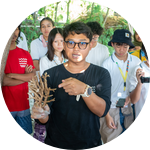15
0
0
Like?
Please wait...
About This Project
We hypothesize that near real-time monitoring using PTZ CCTV cameras and the YOLOv10 AI algorithm can effectively monitor coral reef restoration, reduce fieldwork, and enable rapid response to disturbances. Our primary focus is to determine if this technology can accurately assess reef health and growth and provide early warnings to stakeholders. We will also evaluate the effectiveness of UV light in monitoring coral spawning and the ability of AI models to track fish and classify coral cover.

Browse Other Projects on Experiment
Related Projects
Real-time underwater fish identification and biomonitoring via machine learning-based compression of video to text
Underwater monitoring of marine life has traditionally followed a "set it and retrieve it” approach due...
Combining eDNA & Biologging Technologies to Capture Deep-Sea Predatory Interactions Between Whales & Prey
We aim to combine eDNA sampling and biologging to study predator-prey interactions in the deep sea in real...
Can A Low-Cost Camera & Loitering Guard Better Monitor Marine Protected Areas?
Marine Protected Areas (MPAs) are difficult to enforce due to their remoteness and often invisible borders...

